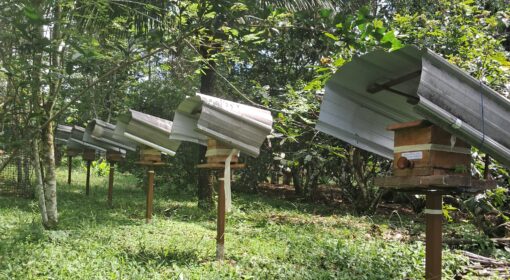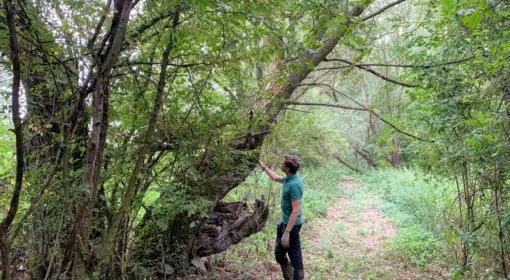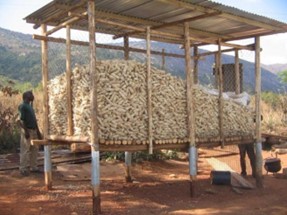By: Frank van Steenbergen

They whistle to the birds. One bird comes. The bird leads them to bees’ nest. They make fire and smoke, which soothes the wild bees. They collect the honey in their jar. They leave some of the wax for the bird.
Such is the story of the Awer, a group of hunter-gatherers, living in Lamu District, Kenya – not far from the border with Somalia. The Awer have developed the ability to whistle to birds, in particular the indicator indicator or the honey guide. According to an article by van der Wal, Geti and Spottiswoode[1] they make several sounds using the perched shells of the giant African land snail. The honey-gatherers first call the birds to join (‘fuuj fuuj guuj’), then switching to a repetitive grunt (‘hah hah’, interspersed with ‘aweh’), asking the bird to lead. It usually takes fifteen to thirty minutes for the indicator indicator bird to take the gatherer to a bees’ nest, singing in the meantime. When the bird has reached the nest, it falls silent, and the gatherer knows he has arrived. There is a story among the Awer that the honey guide bird was not invited to the party where the bees were feasting all the birds in the forest with honey. In ire the honey guide made a pact with the hunter-gatherers. There are also anecdotes of the honey guide making the first approach, drawing the attention of humans to search together.
The Awer collect honey from stinged bees and stingless bees. With the mastery over fire and smoke the bees are placated high in the trees, and honey is collected in portable jars. Some Awer reward the honey guide birds with scraps of wax, but not all honey-hunters do. Some are of the belief that it is better for the birds to stay hungry.
The Awer life is under threat. Their remote Boni forest is a micro-mirror image of what ails the world. First, the forest reserves are under threat because of prolonged droughts and logging. Next. as there is insurgency from neighboring Somalia the forest has been blocked by counter operations for months. Finally, from a remote place it is hard to sell honey in a market where masterly adulterated honey is available.
So, with this there is a genuine danger that this life of honey-gathering with guide birds is disappearing and with this also what is called ‘human-wildlife mutualism’. This is the interaction and understanding between humans and other creatures, that are both free but that understand each other and work together in partnership. What used to be a skill of harmony and intuition thriving in so many places for centuries is silently passing out.
(They are several small groups of honey-hunters using honey guide birds left. For research in North Mozambique: https://www.youtube.com/watch?v=hGC4nG0RqYI)
References
[1] van der Wal JEM, Gedi II and Spottiswoode CN (2022) Awer Honey-Hunting Culture With Greater Honeyguides in Coastal Kenya. Front. Conserv. Sci. 2:727479. doi: 10.3389/fcosc.2021.727479



